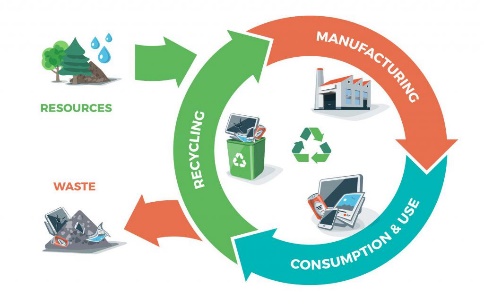Canada, together with other countries, has embraced the opportunity to transition its unsustainable consumer economy to a sustainable one that "closes the loop" on the full life span of a product by recycling waste generated from manufacturing, consumption and use. The goal of this circular economy, illustrated in the accompaning scheme, is to bring benefits for both the environment and the economy by extracting the maximum value and use from all raw materials, products and waste, thereby fostering energy savings and reducing greenhouse gas emissions. This paradigm envisions carbon dioxide as a feedstock and asset, rather than a waste product and liability, one that can be converted into value-added chemicals and fuels for a carbon neutral carbon cycle.
